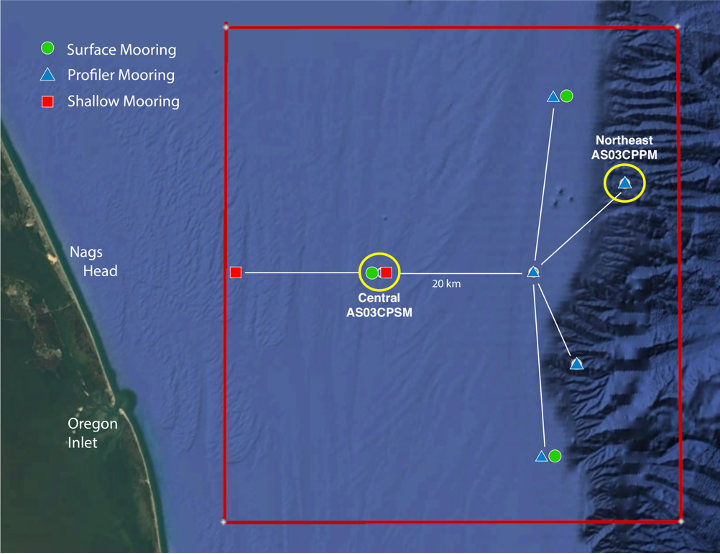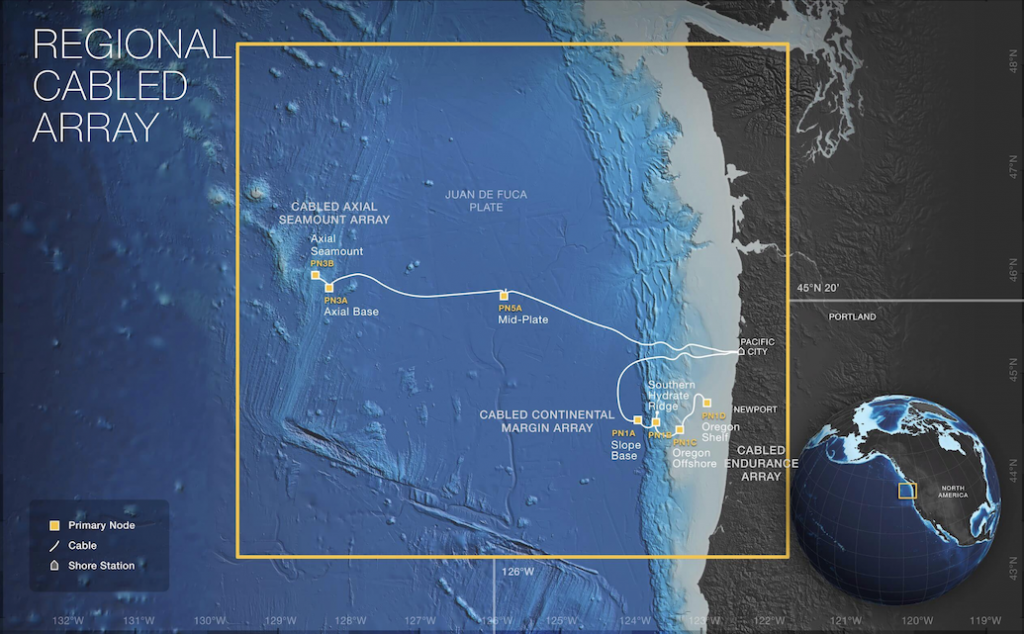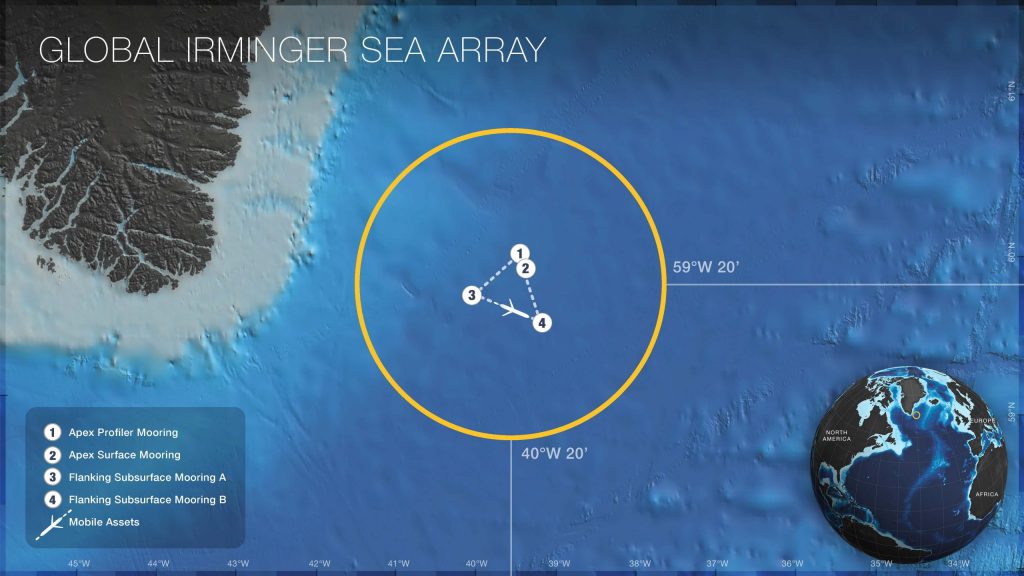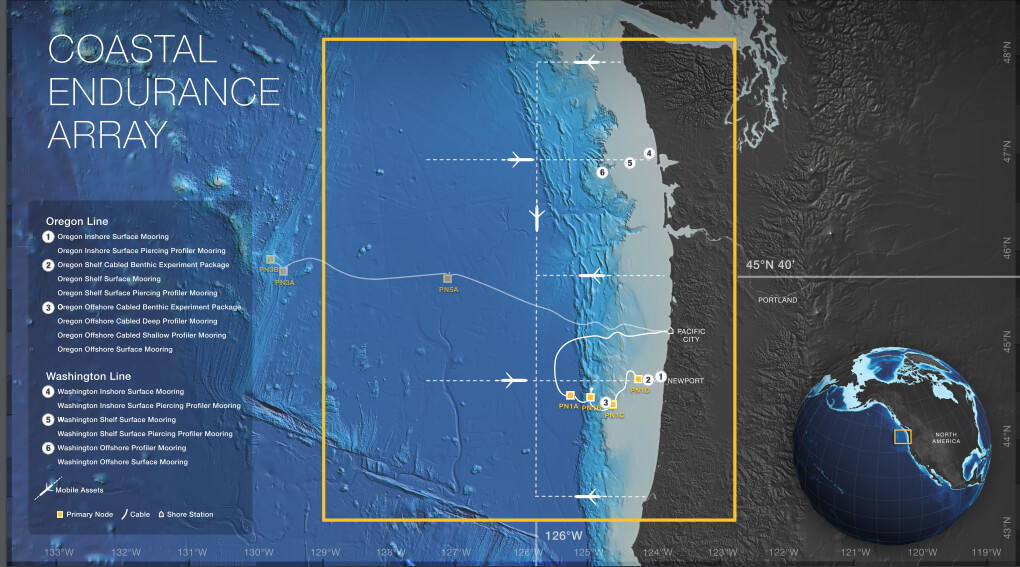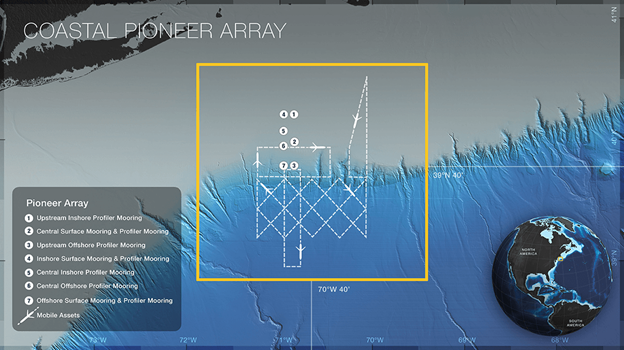Coastal Pioneer Array MAB
Schematic drawing of the Pioneer Mid-Atlantic Bight (MAB) moored array to be deployed off the coast of Nags Head, North Carolina. The full array, to…
Regional Cabled Array
The first U.S. ocean observatory to span a tectonic plate, the Regional Cabled Array (RCA) provides a constant stream of real time data from the…
Global Station Papa
The Global Station Papa Array is located in the Gulf of Alaska next to the NOAA Pacific Marine Environmental Laboratory (PMEL) Surface Buoy. The region is extremely vulnerable to ocean acidification, has a productive fishery, and low eddy variability. It is impacted by the Pacific Decadal Oscillation and adds to a broader suite of OOI and other observatory sites in the Northeast Pacific.
Global Irminger Sea
The Global Irminger Sea Array in the North Atlantic is located in a region with high wind and large surface waves, strong atmosphere-ocean exchanges of energy and gases, carbon dioxide sequestration, high biological productivity, and an important fishery. It is one of the few places on Earth with deep-water formation that feeds the large-scale thermohaline circulation.
Coastal Endurance Array
Located in the Northeast Pacific Ocean off the coasts of Oregon and Washington, the Coastal Endurance Array is part of a regional observatory network that includes OOI, Station Papa, and Ocean Networks Canada. Measurements taken by this network collectively capture variability of ocean properties across a broad range of temporal and spatial scales. They allow examination of ocean health issues, including hypoxia, ocean acidification, and harmful algal blooms.
Coastal Pioneer Array NES
The Coastal Pioneer Array is located off the coast of New England, about 75 nautical miles south of Martha’s Vineyard. The Continental Shelf-Slope area in this region is highly productive. It serves as a dynamic intersection where ocean currents meet in weather-like “fronts,” and where nutrients, pollutants, and other properties are exchanged between the coast and the deep ocean
